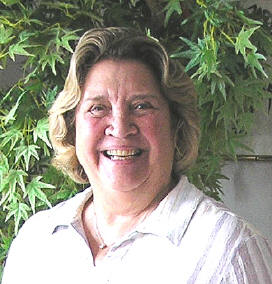|
Ground Covers...The Versatile Solution
Carol Sieck
Adams County Master Gardener
 There are many areas in the garden that are difficult areas to plant; lillies under
dense shady trees, sunny slopes, very wet areas, as well as extremely dry spots. I have a little space between my mailbox and the road--a very hot tiny strip -- and a succulent ground cover, (sedum) was the perfect fit for
such a difficult spot. Often there are areas that are hard to mow or even to weed-whack and we have all There are many areas in the garden that are difficult areas to plant; lillies under
dense shady trees, sunny slopes, very wet areas, as well as extremely dry spots. I have a little space between my mailbox and the road--a very hot tiny strip -- and a succulent ground cover, (sedum) was the perfect fit for
such a difficult spot. Often there are areas that are hard to mow or even to weed-whack and we have all
seen slopes that we would not want to mow.
Ground covers are usually low growing plants that snugly fill in an area covering the bare ground. These plants are usually short, various shades of green, although some are variegated (mixture of white and green on their
leaves); some even change colors in the fall. There are 3 types of covers, according to how they spread; runners, trailing, and mat formers. All will grow close to each other to form a dense cover. This density helps control
weeds and it reduces the loss of moisture in the soil. Most commonly used for moisture retention, compost needs to be “refreshed” ,but ground covers live for years without replenishing.
Ground covers can fill an area around main attraction plantings like flowering bushes or tall grasses. They offer a gentle transition from one special plant to the next, giving the eye a break in height and texture as well
as adding interest and a variety of colors in the gardens. Some covers can even be used in walkways, like baby tears in the Thyme family between stepping stones.
I had a very dry, heavily shaded area in one garden bed; Judy Bryant, MG, gave me some Sweet Woodruff- which solved the problem perfectly. It has a tiny white flower, grows to about 6 inches tall like a little tree, is
hardy, and easy to transplant Literally, you can dig up a couple of pieces, open up a small hole and stick it in. Not many plants are so easily shared.
In shady beds that receive some rain, Pachysandra is a dependable plant that also looks like a little tree and produces a cluster of small white flowers. Its roots are soft, white, and long. To plant, soften the desired area
with a trowel to about 4 inches deep, bury the roots, and space the plants about 4 inches apart. Then add some compost or leaves on top and keep it covered until you feel resistance when pulling the plant gently.
For dry shady areas, myrtle is a winner; plant it the same way as pachysandra, covering it until it actually takes root, and moisten the ground a bit until it is established. After it is growing well, to keep it looking
tidy, run your fingers through the long stems, lifting them up, and cut them like a barber cuts hair. This causes it to split and get thicker. It produces a tiny purple flower in the spring- and hint that winter is ending.
Sunny areas are good spots for succulents (think cactus without needles). Sue Bucher, MG of Adams County, just won a Best of Show for her succulent ground covers in a bowl arrangement. She recommends Hens and Chicks also
known as Houseleeks which is in the group of Sedums. These are very hardy, drought resistant and can be left outside in the winter. She uses Angelina, Sedum voo-doo, and Red Cob Webs in pots as an outdoor arrangement, which
of course can be brought in for special events. Another succulent is Jungle Shadows. It has purple foliage which spreads slowly but the color makes up for that. A fast growing succulent is Lysimachia congestiflora or Outback
Sunset which produces yellow flowers, and has
variegated leaves.
A few bulbs can be an added interest interspersed with the low plants; Crocus bulbs, especially “Tommies” bloom very early and only grow 3 to 4 inches high. Just plant them in with the sunny ground cover about 3 inches deep.
Also Sun Drops love full sun, and are early bloomers along with Lilies of the Valley which add spring
color.
You can amuse yourself reading ground cover labels with such interesting names like Throatwort, Bloodroot, Soapwort, Pigroot, Monkey Flower, Donkey plant, St. Johns Wort, Fleabane, Sandwort and Cats Ear. Lastly, the favorite
of those of us
who love to touch plants, is the soft fuzzy leaf, Lambs Ear.
Read other articles on garden and landscape design
Read other articles by Carol Sieck
|